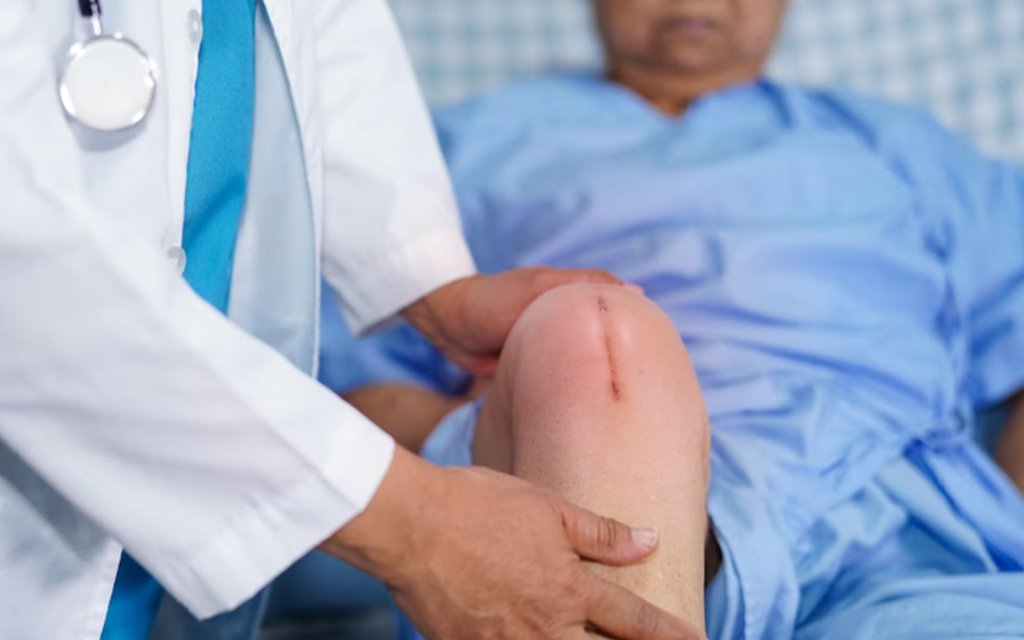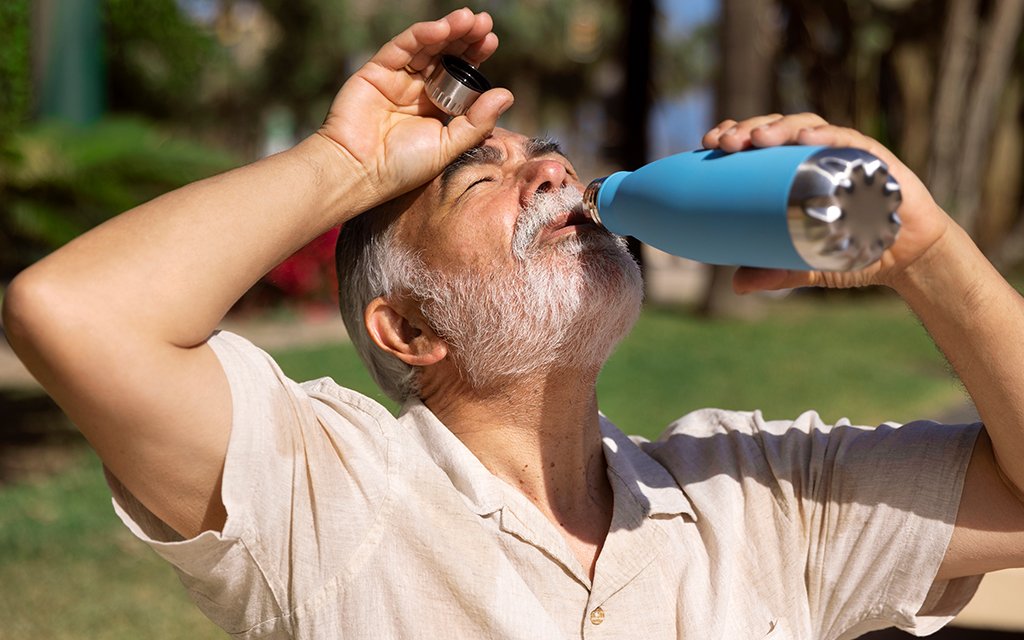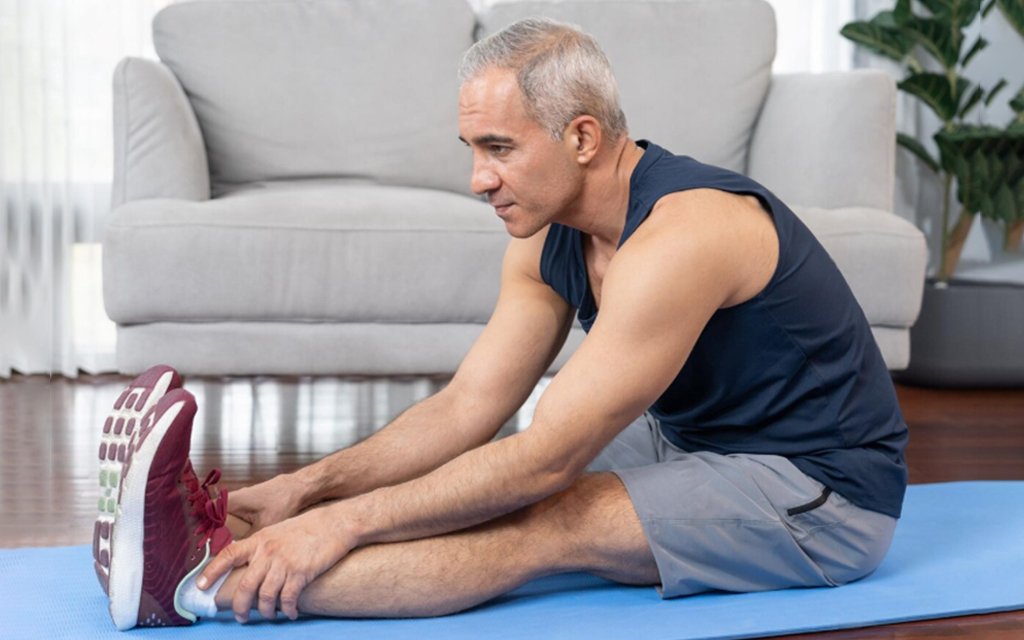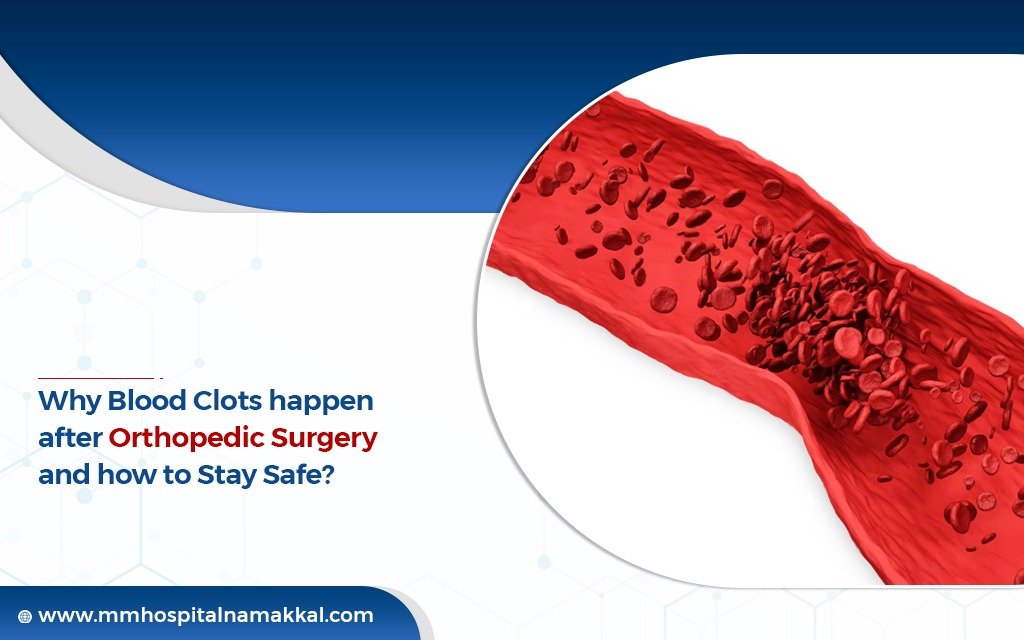Orthopedic surgeries, such as Knee Replacements, are common procedures performed to treat joint pain, injuries, or conditions like osteoarthritis. However, while these surgeries can significantly improve mobility and quality of life, they also come with risks, and one of the most common complications is blood clots. In this article, we’ll explore why blood clots occur after Orthopedic Surgeries, particularly Knee Replacements, and provide helpful tips on how patients can reduce their risk of developing blood clots.
Understanding Blood Clots After Orthopedic Surgery
A blood clot, or deep vein thrombosis (DVT), forms when blood thickens and clumps together, usually in the veins of the legs. This condition can be particularly concerning after Orthopedic Surgeries like hip , Knee and Robotic-Assisted Knee Replacement Surgery, as it can impede blood flow, leading to severe complications such as a pulmonary embolism (PE) – a condition where a clot travels to the lungs, blocking airflow.
In Orthopedic procedures, especially after Knee Surgeries, patients are at a higher risk for blood clots due to various factors like immobility, damage to blood vessels, and changes in blood flow during the recovery process. Hip and knee surgery, Robotic-Assisted Knee Replacement Surgery in Trichy , Namakkal and Robotic Orthopedic Knee Surgery in Tamil Nadu have significantly reduced the invasiveness and recovery times of knee surgeries, but the risk of blood clots still remains.
Why Blood Clots Happen After Orthopedic Surgery
Immobility and Stagnant Blood Flow
After undergoing Orthopedic Surgery, especially procedures like Knee Replacements, patients often experience difficulty moving around initially due to pain or limited mobility. This can cause blood to pool in the lower legs, leading to the formation of clots. When the leg is not moved frequently, blood flow slows down, making it easier for clots to form.
Trauma to Blood Vessels
During any Orthopedic Surgery, including knee and Hip Replacement Surgery, Robotic-Assisted Knee Replacement Surgery, the surgical team needs to make incisions to access the joint. This may cause minor damage to the surrounding blood vessels. Even small amounts of trauma to the blood vessels during surgery can trigger clotting mechanisms in the body, resulting in blood clots.
Inflammation After Surgery

Surgery, including hip and Knee Surgery, Robotic Orthopedic Knee Surgery in Tamil Nadu, causes a natural inflammatory response in the body as part of the healing process. Inflammation can increase the levels of clotting factors in the blood, making blood more likely to coagulate. As a result, this can increase the risk of clots forming post-surgery.
Imbalance in Coagulation Factors
Patients who undergo orthopedic surgery may experience changes in their clotting system. The body’s natural coagulation factors, which help in wound healing, may remain active longer than necessary, increasing the risk of clot formation. This is particularly true for patients who may have underlying conditions, such as obesity or diabetes, which already place them at a higher risk of developing blood clots.
Prolonged Bed Rest After Surgery

Bed rest is often prescribed after surgery, particularly after a Robotic-Assisted Knee Replacement Surgery. Extended periods of immobility make the veins in the legs more likely to form clots. Without adequate movement and circulation, the risk of developing deep vein thrombosis (DVT) increases significantly.
How to Stay Safe: Reducing the Risk of Blood Clots After Orthopedic Surgery
Though the risk of blood clots following Orthopedic surgeries is real, there are several measures that patients can take to lower the risk and ensure a smooth recovery.
Follow the Doctor’s Instructions for Mobility
One of the most effective ways to prevent blood clots is to follow the doctor’s guidelines for mobility after surgery. While rest is important, it is also crucial to start moving the affected leg as soon as possible. In Robotic-Assisted Knee Replacement Surgery, physiotherapists will help patients start moving their leg gently through exercises to promote blood circulation and prevent clotting.
The earlier patients start moving after Robotic Orthopedic Knee Surgery in Tamil Nadu, the less likely they are to experience clot formation. Early mobility helps activate the calf muscles, improving venous return and reducing the risk of DVT.
Take Blood Thinners as Prescribed
The use of blood thinners or anticoagulants is a critical part of post-surgical care. Doctors often prescribe these medications to reduce the likelihood of clot formation. Blood thinners work by decreasing the blood’s ability to clot, preventing the formation of DVT and reducing the risk of pulmonary embolism. It’s important to take these medications exactly as prescribed, without missing doses or adjusting the dosage, to ensure maximum protection against blood clots.
Wear Compression Stockings
Compression stockings are often recommended after orthopedic surgeries, especially knee replacements. These stockings apply gentle pressure to the legs, which helps improve circulation and prevent blood from pooling in the veins. Compression therapy can be an effective way to reduce the risk of DVT in the legs after surgery. Patients undergoing Robotic-Assisted Knee Replacement Surgery or any other Knee Surgery should consult their surgeon about the best type of compression stockings for their needs.
Drink Plenty of Water

Blood can become thicker and more likely to clot when dehydrated. Maintaining proper hydration helps enhance blood flow and lower the chance of a clot forming. Drinking lots of water, in particular, is crucial in the days after surgery. Regarding the appropriate fluid intake for their recuperation phase, patients should speak with their physician.
Healthy Diet Eating a Balanced Diet

Following healthy diet can help to maintain healthy circulation and reduce inflammation in the body. Foods rich in antioxidants, such as fruits and vegetables, can help minimize the risk of clot formation. It is also advisable to include lean proteins and foods rich in omega-3 fatty acids, which can promote better blood flow and reduce clotting tendencies. On the other hand, patients should avoid foods that may increase the risk of clots, such as those high in saturated fats, as they can contribute to inflammation.
Monitor Symptoms of Blood Clots
Patients should be vigilant and report any signs of a blood clot to their healthcare provider immediately. Symptoms of DVT in the legs include swelling, redness, and pain in the affected leg. If a clot travels to the lungs, it can cause chest pain, difficulty breathing, or even coughing up blood, which requires immediate medical attention.
Physical Therapy and Exercises After Knee Surgery

Especially in Robotic-Assisted Knee Replacement Surgery, physical therapy is an essential part of recovery. Physiotherapists will guide patients through exercises that help improve leg movement, strengthen muscles, and ensure proper blood flow. These exercises can also prevent the formation of blood clots and improve overall recovery.
Conclusion
Blood clots are a serious risk following orthopedic surgeries like hip and knee surgery, Robotic-Assisted Knee Replacement Surgery. However, with the right precautions, including following post-surgery instructions, staying mobile, taking prescribed medications, and keeping hydrated, patients can significantly reduce the risk of blood clots.
For patients in Tamil Nadu, particularly those opting for hip and knee surgery , Robotic Orthopedic Knee Surgery in Tamil Nadu, staying informed about the risks and taking necessary measures can ensure a faster, safer recovery. Always consult with your surgeon and healthcare provider for the best post-surgical care plan tailored to your needs.


